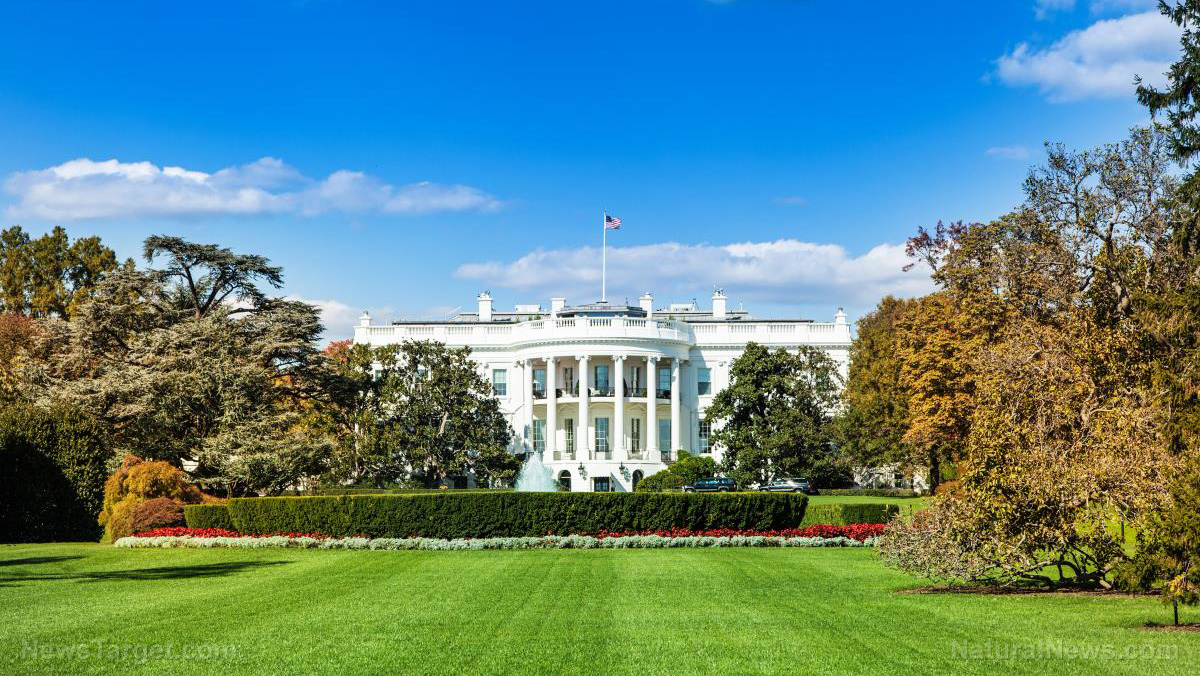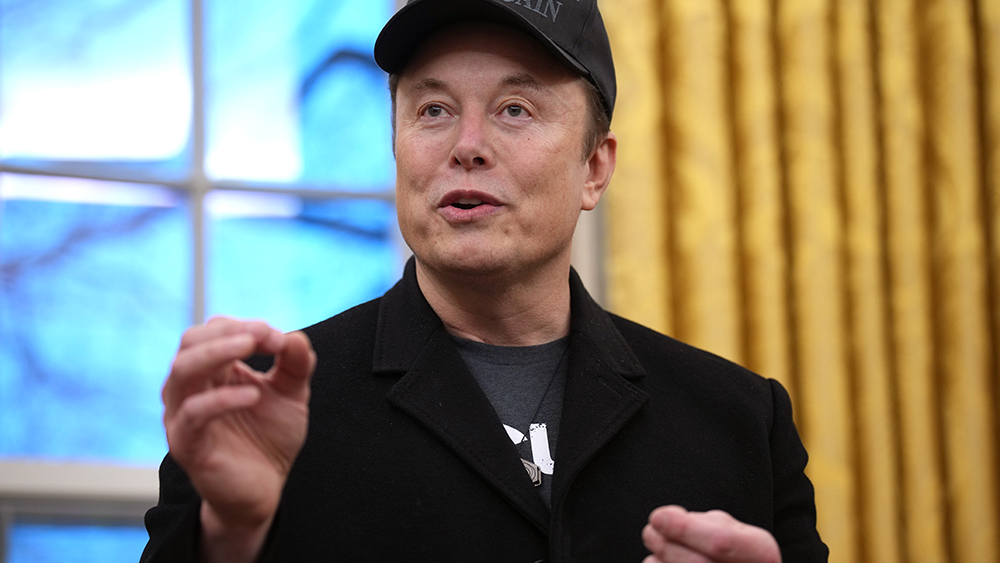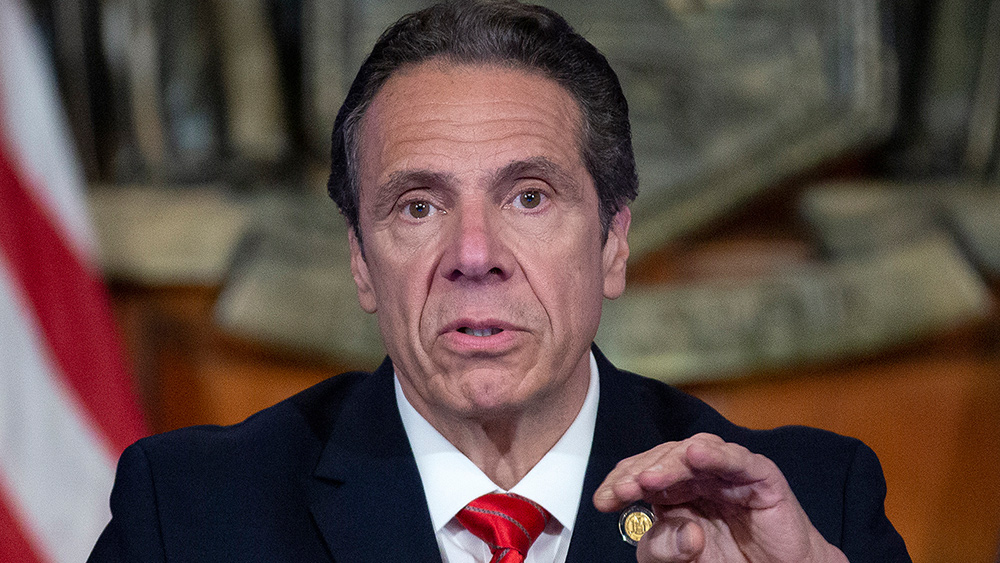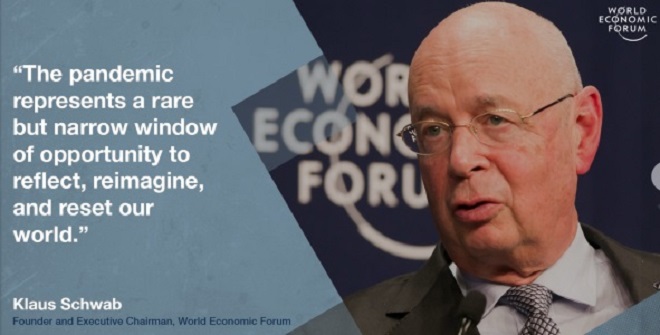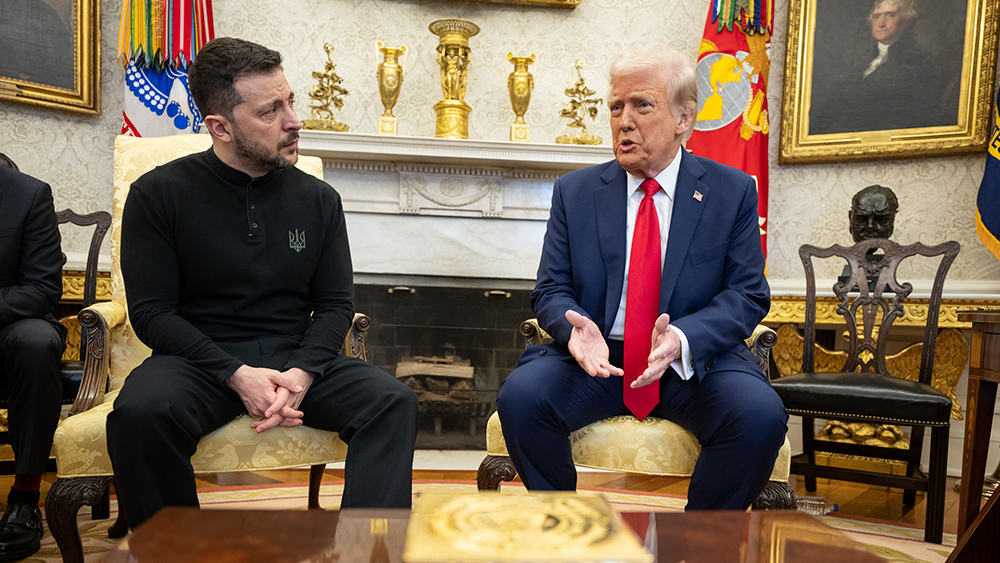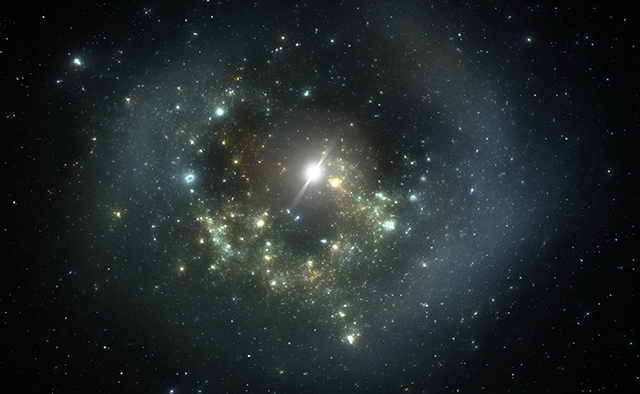Sen. Ron Johnson propels new inquiry into 9/11 Building 7 collapse, questions government transparency
By willowt // 2025-04-23
Tweet
Share
Copy
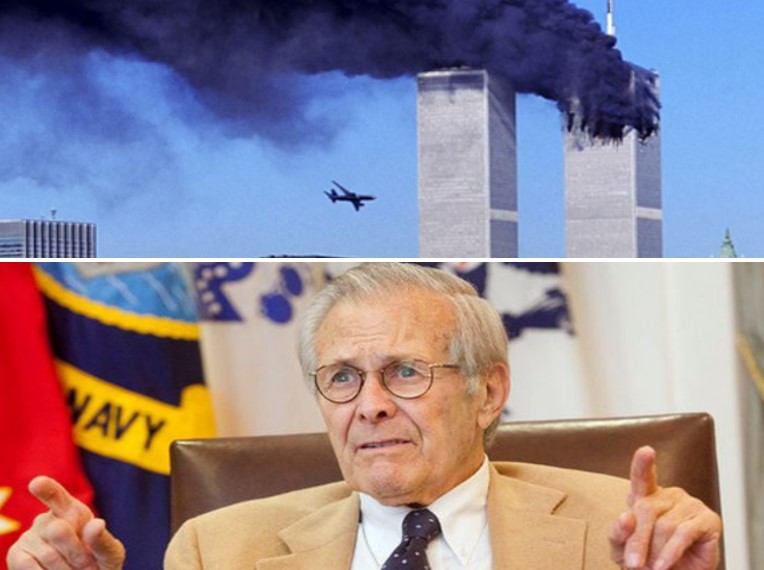
- U.S. Sen. Ron Johnson (R-Wis.) plans to lead hearings on 9/11, focusing on unresolved questions about WTC 7’s collapse. He challenges official reports (notably NIST’s findings), demands documentation, and scrutinizes the rapid debris removal from Ground Zero.
- Johnson describes WTC 7’s collapse as a “classic implosion,” disputing NIST’s claim that fires alone caused it. Critics, including engineers and architects, cite its near-free-fall descent as evidence of controlled demolition — a claim dismissed by mainstream experts.
- Johnson allies with 9/11 transparency advocates like Curt Weldon, alleging Bush-era cover-ups, while facing backlash from some conservatives. The Trump administration is pressed to declassify materials, though past bipartisan inquiries avoided structural collapse theories.
- Over 1,500 professionals petition for a new investigation, citing anomalies like symmetrical collapses and molten steel — issues NIST deems resolved. Firefighter accounts of explosions further fuel debate, though experts attribute these to natural collapse dynamics.
- The hearings risk polarizing 9/11 narratives, balancing demands for transparency against institutional credibility. Supporters see a path to truth, while critics warn against reviving conspiracy theories that overshadow historical unity and resilience.
Johnson unveils congressional plans to reexamine WTC 7 collapse claims
Johnson emphasized his focus on WTC 7, which collapsed without direct plane impact, calling its descent “a classic implosion” and questioning official findings that attributed its fall to office fires. “I don’t know if you can find structural engineers other than the ones in NIST who would say that didn’t come down in a controlled demolition,” he stated, referencing the 2020 documentary Calling Out Bravo 7 as pivotal to his scrutiny. He criticized the swift destruction of debris post-9/11, arguing it violated standard investigative protocols: “Who ordered that? Who is in charge? Where’s all the documentation from the NIST investigation?” Johnson also hinted at greater transparency under President Donald Trump, citing his New York roots and frustration with prior FBI secrecy: “We didn’t get squat from the FBI. Hopefully now, this administration will prioritize the truth.” The senator has partnered with former Rep. Curt Weldon (R-Pa.), a longtime advocate for 9/11 transparency, amid calls for a new investigation into potential intelligence failures or concealed evidence. Weldon, featured in Tucker Carlson’s recent interview series, has alleged a cover-up by Bush-era officials.Controversy over NIST’s scientific validity
The NIST’s 2005 report attributed WTC 7’s collapse to fires sparked by debris from the Twin Towers, exacerbated by inadequate water pressure and structural failure. Johnson characterized it as a “corrupt investigation,” challenging its depiction of a single column failure. Critics like architects and engineers behind a petition calling for reexamination point to WTC 7’s near-free-fall descent — described as symmetric and resisting no gravitational forces — arguing no fire could replicate such collapse. NIST maintains its findings, though Johnson’s team has framed discrepancies as unresolved. “When NIST itself admits free-fall for eight stories, you don’t need an engineer to recognize what a controlled demolition looks like,” he said. Firefighter accounts from 9/11 — some referencing explosions in the Twin Towers — add fuel to the debate. However, experts have long dismissed controlled demolition theories, citing NIST’s peer-reviewed conclusions.The political dynamics and demand for transparency
Johnson’s stance, backed by WND Media advocacy and amplified by Trump-aligned voices, has fractured conservative allies. Former Rep. Joe Walsh (R-Ill.) rebuked the senator’s “conspiracy theorist” turn, while Trump’s own past remarks — stating in 2013 he’d “believe a lot of people who have studied this very, very closely, and were in on 9/11, that said there was a bomb” — add political complexity. The Trump administration, nearing end-of-tenure, faces pressure to declassify materials. A 2021 bipartisan House inquiry revealed gaps in pre-9/11 intelligence but did not probe structural collapse theories. Johnson’s hearings, if pursued, would mark the first direct congressional examination of such theories in decades.Public advocacy and the architects’ petition
Over 1,500 architects, engineers and scientists have signed a petition demanding scientific reevaluation of WTC collapses. Their claims highlight video evidence of symmetrical collapse, molten steel traces and explosions fitting controlled demolition patterns, which NIST has dismissed as secondary phenomena. “Public skepticism remains because key evidence was never adequately addressed,” contends Emlyn Thomas, a structural engineer and petition signatory. NIST has rejected reanalysis, citing sufficient data in its original report.The path forward for 9/11 legacies
As debates over WTC 7 resurface, Johnson’s inquiry underscores the enduring challenge of balancing skepticism with institutional credibility. While supporters argue unprecedented access to documents could resolve lingering doubts, detractors caution against politicizing unresolved historical trauma. For Johnson, the goal is clear: “The American people deserve the truth.” Others worry this revival risks overshadowing established narratives of resilience and unity. Whether the hearings uncover new truths or rekindle old suspicions, their outcome will shape how future generations view both the events of 9/11 and the government’s transparency. As Mel Gibson succinctly stated in a viral post, “It’s time for the truth.” Sources include: YourNews.com EconomicTimes.IndiaTimes.com Yahoo.com X.comTweet
Share
Copy
Tagged Under:
national security terrorism corruption 9/11 Trump conspiracy big government deception lies World Trade Center rigged bush truth skeptics ron johnson rational coverup irrationality real investigations faked
You Might Also Like
Trump administration secures 18 trade proposals, boosting market confidence
By Cassie B. // Share
Musk to step back from DOGE to focus on Tesla amid political backlash
By Cassie B. // Share
By Finn Heartley // Share
Israeli strikes kill civilians in Lebanon, and take out a prominent Jamaa al-Islamiya commander
By Lance D Johnson // Share
Recent News
Astronomers witness a rocky planet BOILING AWAY, leaving behind a COSMIC TAIL
By ljdevon // Share
DHS cuts $2.7M in Harvard funding over antisemitism failures, left-wing indoctrination
By lauraharris // Share

